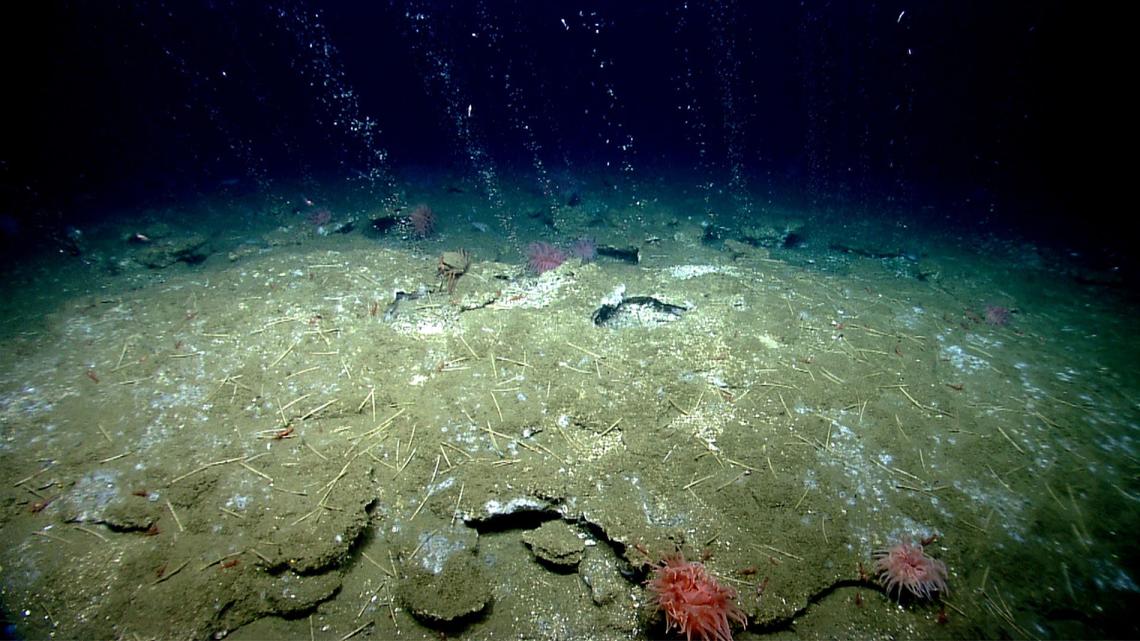 Imagine scuba diving to the darkest depths of our ocean and finding scattered along the ocean floor, huge rock formations.
Imagine scuba diving to the darkest depths of our ocean and finding scattered along the ocean floor, huge rock formations.
But these are no ordinary rocks. They are teeming with tiny microbes that consume large quantities of methane?
What's more, these wee organisms might actually be processing the methane to create those rock formations!
These rocks may, in fact, be huge unexplored sinks (absorbers) of methane.
The Discovery
Scientists have known about methane seeps for decades. Located more than 500m below sea level, the methane seeps release between 6% to 22% of the earth's methane from underground reservoirs.
This methane bubbles up from the seafloor, a good amount of which is absorbed into the water, and the remaining gets released into the atmosphere. Earlier studies had found several of these methane-munching microbes in the sediments around these seeps. Not much attention had been paid to the surrounding rocks.
Recently the Woods Hole Oceanographic Institution sent two submersibles on expeditions to bring back rock samples, both near and far from the seeps. Their analysis revealed large clusters of microbes in the rocks near the seeps. Researchers have identified them as part of the family 'arachea.'
To figure out how the microbes work, researchers exposed the rocks to a radioactive form of methane that was then tracked. What they found was amazing!
It turns out the microbes do ingest the methane. The by-products that are excreted onto the rocks interact with the calcium in the surrounding water to form carbonate. This then en-tombs the microbes. Think of how long the massive rock structures would have taken to grow to that size and how many microbes it might hold!
What Are The Possibilities?
According to scientists, the samples were not mined from deep within the rocks. There could still be huge living colonies found buried within the massive underwater rock structures. These rock microbes consume methane much more slowly than the ones found in sediments near the methane seeps.
The biggest benefit of these tiny organisms is their ability to contain climate change. Methane is a greenhouse gas and traps 30% more of the sun's heat compared to carbon dioxide. Methane is also released by livestock and through human activities. Since these little critters chomp up the gas released from underwater seeps, there is actually a much smaller proportion that gets eventually released into the atmosphere.
These microbes could also be a small part of an undiscovered thriving ecosystem on the ocean floor. If we understand them well enough, perhaps, they can be used to reverse the effects of climate change in the future.






